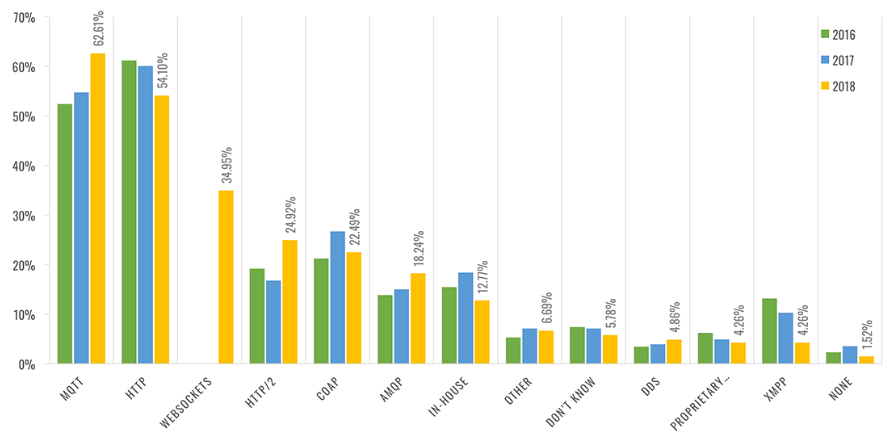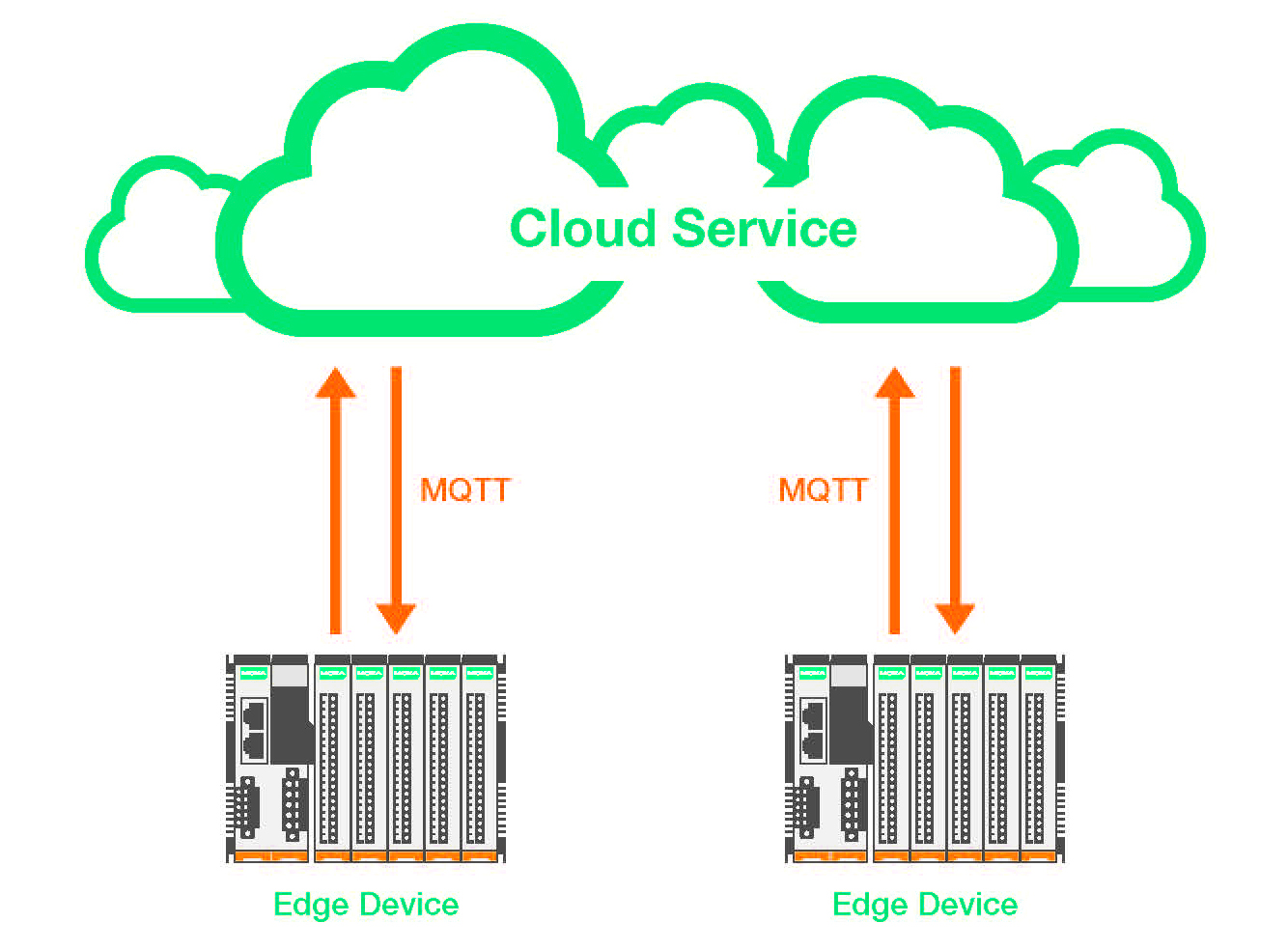|
MQTT — Enabling Edge-device Connectivity in the IIoT Era
The MQTT protocol is now the top choice for most IIoT applications. As shown in Figure 1, more than half of IoT developers use MQTT as their communication protocol.

Figure 1. MQTT is the top protocol for IoT applications.
Copyright 2018, Eclipse Foundation, Inc. Made available under a Creative Commons Attribution 4.0 International License (CC BY 4.0)
What Is MQTT?
MQTT uses a publish-subscribe pattern (see Figure 2) with one broker and several publisher and subscriber clients. Publishers send data to the broker, which distributes the data to subscribers.

Figure 2. Publish-subscribe pattern
Publish-subscribe Messaging Pattern
Only the broker needs to be online all the time. The clients only need to get online when a connection is available, or when they need to send or receive data.
Event-driven
MQTT clients only publish data to the broker when certain conditions are met (e.g., a warning signal is triggered). That is, clients actively update data, instead of passively waiting for another device to request the data.
Many-to-many Communication
In factory machine-to-machine (M2M) applications, machines at each station share their own process statuses with machines at other stations. Using MQTT to implement M2M communication improves both efficiency and reliability.
QoS Design
The MQTT protocol uses three QoS levels to prioritize data: QoS 0 (at most once), QoS 1 (at least once), or QoS 2 (exactly once).
Security
MQTT brokers support account names and passwords to prevent unauthorized clients from connecting to the broker to subscribe to topics, and TLS encryption for data transmissions greatly minimizes the chance that data will get hacked during transmission.
MQTT Application Architecture
Two major system architectures are used:
Connecting Directly to the Cloud
Most public cloud services (AWS, Azure, Google Cloud, Alibaba Cloud, etc.) support the MQTT protocol to allow edge devices to connect directly to the cloud. To remain competitive and help shape the future of the industry, cloud services should at least provide the following benefits: time savings, non-stop service, and a rich set of data mining tools.
 Connecting to a Local Gateway
Connecting edge devices directly to the cloud has benefits, but you should also be aware of various concerns related to adopting cloud services for IIoT applications: cost and data security.

The Challenges of Converting to an IIoT Application
You can expect to encounter some or all of the following challenges when transforming a traditional OT application to an IIoT application.
Legacy Devices Currently In Use Do Not Support MQTT
For many facilities, engineers will first need to survey and purchase new remote I/O products and gateways that support MQTT. With so many legacy devices still being used at field sites around the globe, converting a factory to an IIoT-based setup could require a huge investment.
Merging IT With Traditional Automation Applications Is Easier Said Than Done
For example, OT protocols like Modbus use data packets with small headers and payloads, whereas IT protocols use MQTT, RESTful API, and SNMP to collect data. Many IT engineers are not familiar with Modbus.
Security Is a Prime Concern
Maintaining network security is a prime concern for IIoT applications. From past experience, cyberattacks originate from outside the factory, so the first step to improving cybersecurity is to install a secure router, configure the firewall to keep the hackers out, and in general, upgrade your network security to prevent outside attacks. Edge devices on a factory intranet more often than not only support limited security functionality (if any), and still use unencrypted protocols.
Moxa’s Solution
Moxa’s newly-released ioThinx 4510 Series modular remote I/O devices have key features that make them a perfect match for IIoT applications.
MQTT Client Support
The ioThinx 4510 Series supports MQTT client, which allows devices connected to the ioThinx 4510 to easily connect to cloud services. Although the ioThinx 4510 Series is promoted as an entry-level remote I/O product, its support for MQTT makes it a powerful asset.
Built-in Modbus Gateway
The ioThinx 4510 Series has a built-in 3-in-1 serial interface that can be used to implement a Modbus gateway. It only takes a few clicks to configure the ioThinx 4510 to collect data from a serial Modbus device. As with I/O data, the serial Modbus data is accessed by MQTT.
Security Enhancements
To protect users’ data, the ioThinx 4510 Series supports TLS v1.2 for encrypting data sent via MQTT transmissions. TLS v1.2 protects data transmitted over a network from third-party hackers. In addition, the broker supports account names and passwords to prevent data from being published to unauthorized brokers.
For more information about how MQTT is being used for IT/OT applications, click on the following link to download the corresponding white paper.
|
|




